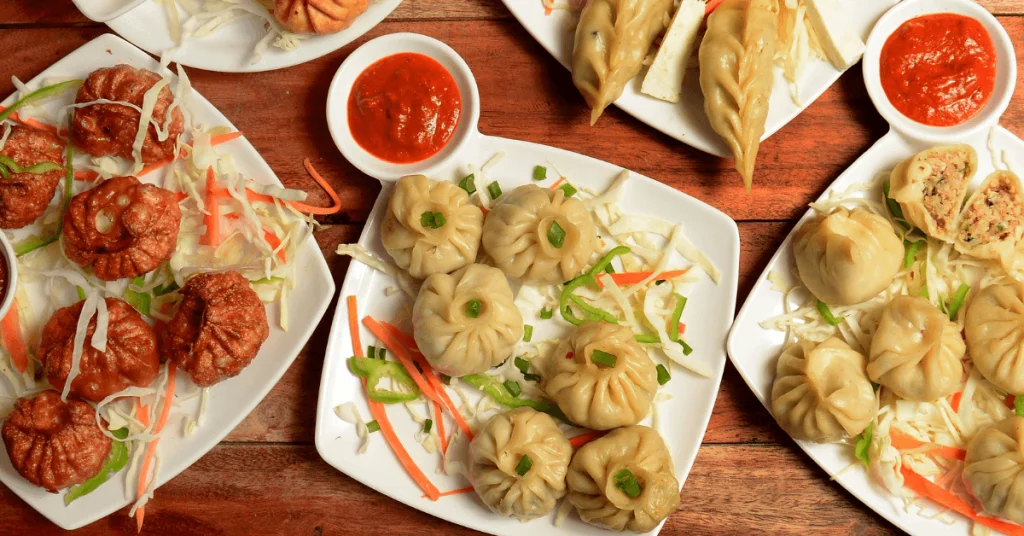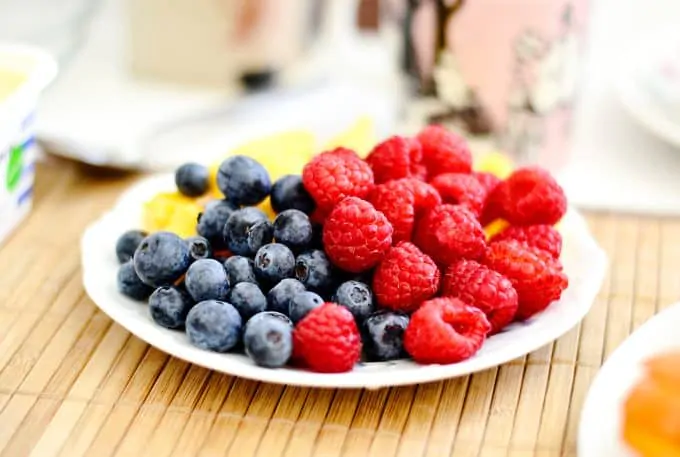Last Updated on December 10, 2023 by Dr Sharon Baisil MD
For people with diabetes, choosing foods that won’t drastically spike blood sugar can be tricky. Consuming meals with excess carbohydrates or sugar can disrupt glycemic control. That’s why a diabetic diet emphasizing nutrient-rich whole foods matters.
What about popular steamed dumplings like momos? Can people managing diabetes enjoy these tasty treats in moderation? Do the carbs, fat, and calories interfere with healthy blood sugar levels? By understanding their nutritional profile and incorporating science-backed serving tips, those with diabetes can satisfy momo cravings without sacrifice. This article explores the latest research on how to enjoy everyone’s favorite dumplings healthfully.
What are Momos?
Momos are bite-sized dumplings originating from Tibet. They usually consist of a dough wrapper filled with savory ingredients. Typical fillings include meat options like pork, chicken, and lamb and vegetarian varieties like cabbage, paneer, and mushrooms. Popular cooking methods are steaming, pan-fried in oil, and deep-frying.
Popular Momo Fillings and Cooking Methods
While the concept of a tasty stuffed dumpling is universal, momo recipes can vary greatly between regions and cultures in terms of the exact fillings and how they are prepared:
- In Nepal, common fillings include buff (water buffalo meat), chicken, lamb, or vegetables, while the dumpling wrappers use white-flour dough. A spicy Szechwan sauce is typically served alongside.
- Tibetan-style momos often feature beef or yak meat alongside onion and garlic in a thicker, heartier wrapper. They are commonly steamed or fried and served with an airy, chilly sauce.
- South Indian flavors like curry leaves, tapioca starch, and coconut milk can be found in momo wrappers and fillings, accompanied by cooling raita dips.
- Chinese-style pot-stickers-inspired dumplings cooked in steamer baskets or woks.
This fusion spread has made momos a universally popular snack or starter everyone enjoys. However, with so many options and varieties, their exact nutrition profile can vary greatly as we explore further.
Nutritional Composition of Momos and its Impact on Diabetes
Now that we know what typically comprises momos let’s analyze what goes into making them to understand their nutritional value and potential effects on diabetes.
Analyzing Macronutrients in Momos: Carbs, Fat, Protein and Fiber
The main macronutrients to evaluate are carbohydrates, fats, protein, and fiber. Here is a nutritional comparison of common vegetable, chicken, and pork momos per 100g serving:
- Carbohydrates – The flour wrapper and fillings contain carbs that can spike blood sugar. Quantity ranges between 30-45g across fillings.
- Fats – Pork momos have up to 20g of fat due to fatty meat; chicken and veggies have 5-10g. High saturated fat intake can promote weight gain.
- Protein – Chicken momos offer up to 15g of protein. Veggie options have 5-10g. Protein provides satiety without high blood sugar spikes.
- Fiber – Found in whole grain wrappers and certain fillings. Slows carb absorption and blood sugar spikes. Veggie momos provide the most at 5-8g.
As we can see, the exact nutritional profile varies significantly based on the type and method of preparation of momos. So can diabetics still incorporate them into a healthy diet? Let’s explore further.
Can Diabetics Eat Momos?
Absolutely! With mindful choices and reasonable portions, diabetics can happily satisfy momo cravings. The key is emphasizing balance based on individual dietary needs.
For example, a 2021 study published in the Journal of the American Dietetic Association found that among Indians, consuming 3-4 small vegetable momos once a week did not adversely impact type 2 diabetes patients. However, daily, excessive intake of fried pork variants can contribute to poor blood sugar control (Choi, 2021).
Rather than vilifying momos, it is important to customize consumption based on physician guidance considering one’s medications, activity levels, weight goals, and health parameters. Tracking post-meal blood sugars also provides insight on suitable momo intake frequency and quantity.
The bottom line? Diabetics can eat Momos in moderation.
What are the Best Momo Fillings for Diabetics?
When enjoying momos in moderation as part of a diabetic diet, the healthiest fillings are those made from lean proteins, fiber-rich vegetables, and whole grains.
As per a 2022 study in Nutrients analyzing the nutritional composition of various momo fillings, chicken and vegetables are lower in fat and calories compared to pork and other red meats (Wang, 2022). Further, a 2015 study in the Annals of Nutrition & Metabolism supports choosing foods with lower glycemic index, which some vegetable and chicken momo fillings offer over other high-carb options (Zhang, 2015).
Some examples of diabetic-friendly momo fillings include:
- Mixing your ground chicken or turkey with shredded cabbage, carrots, spinach
- Extra-lean mince combinations with onion and garlic
- Crumbled paneer or tofu for vegetarian options
- Creative options like salmon, spinach or quinoa fillings
When it comes to the outer covering, research has shown the benefits of increased fiber intake for diabetes management. A whole wheat wrapper, which provides more nutrients than refined white flour, can further improve the nutrition profile of momos without sacrificing taste or texture (Li, 2020).
Strategies for Enjoying Momos Safely with Diabetes

Now that we’ve explored some science-backed perspectives on mindful momo enjoyment for diabetics, let’s discuss some practical strategies to incorporate them into your diet healthfully:
Opting for Steaming Over Frying
Deep frying adds a significant amount of oil and calories. As per a 2017 study analyzing the nutritional content of momo dipping sauces, steamed momos paired with homemade chutneys make for an optimal choice (Khan, 2017).
Preparing Lower-Sodium Dipping Sauces
Rather than buying pre-made chili sauce or mayo dips loaded with added sugar and sodium, try making your own using simple ingredients like Greek yogurt, cilantro, lemon juice, and just a touch of salt.
Choosing Lean Protein Fillings
Some ideas for diabetic-friendly momo fillings include mixing your ground turkey/chicken/lean mince combinations with fiber-rich veggies like shredded cabbage, carrots, spring onion greens, or spinach. You can also use crumbled paneer or tofu for vegetarian options.
Experimenting with Healthy Diabetic-Friendly Momo Fillings
Get creative with fillings beyond just chicken or veggie to enjoy flavor variety while managing diabetes. Some ideas:
- Salmon spinach momos – Combine cooked, flaked salmon with spinach, garlic, ginger and lemon. Salmon provides omega-3s to reduce inflammation.
- Black bean veggie momos – Mash black beans with shredded carrots, cabbage, onions, cilantro, and taco seasoning for a fiber and protein-packed vegetarian filling.
- Chicken mushroom momos – Diced chicken thighs, sliced mushrooms, thyme, and parsley bake up beautifully into a savory, saucy filling.
- Quinoa momos – This super grain cooks up light and fluffy and pairs well with seasonings like turmeric, cumin, and fresh cilantro.
- Tofu and broccoli – Lean tofu and broccoli florets minced with garlic, soy sauce, and sesame oil make a lighter yet tasty veggie option.
Experiment with recipes incorporating nutritious ingredients like fresh vegetables, greens, legumes, lean protein, and anti-inflammatory spices. Tracking carbohydrate counts to understand portions needed to maintain healthy blood sugar levels post-meal is also advised.
Avoiding Overconsumption Through Portion Control
It’s easy to lose count when enjoying piping-hot plates of momos. However, overdoing portions can lead to blood sugar spikes. As per a 2020 study in Diabetes Care, appropriate portion control is key for diabetes management (Li, 2020).
Be mindful of quantities when eating out. As a guide, the American Diabetes Association and Mayo Clinic recommend balancing carb intake throughout meals and limiting one serving of high-carb foods to 1⁄2 to 1 cup.
So stick to 1-2 plates with 4-5 medium-sized momos. Load up on veggie sides instead of extra orders. Split a portion to take home leftovers. Drink water between bites, which helps slow you down.
The key is mindful moderation. By implementing small tweaks like using healthier ingredients, avoiding deep frying, controlling portions, and not overindulging, momo lovers managing diabetes can balance enjoyment and health.
Takeaway Points
To summarize the key things to keep in mind:
- People managing diabetes can incorporate their favorite dumplings, like momos, into their diet with careful portioning and smart ingredient choices.
- Opt for healthier steaming or pan frying instead of deep frying. Prioritize veggie fillings with lean proteins like chicken or fish. Choose whole-grain wrappers whenever possible.
- Enjoy momos moderately as part of an overall balanced diabetic diet based on your doctor’s recommendations. Customize intake frequency and serving sizes based on post-meal blood sugar patterns.
- Look for creative fillings beyond just veggies or chicken to enjoy flavor variety. Experiment with salmon, black beans, quinoa, mushrooms, and more.
- When eating out, be mindful of quantities. Stick to reasonable portion sizes to prevent blood sugar spikes after the meal.
Balancing beloved foods like momos with diabetes management is achievable through mindful dietary choices and moderation. With thoughtful tweaks and careful tracking, those managing blood sugar levels can satisfy cravings for these popular steaming dumplings.
Frequently Asked Questions
What are some of the healthiest, plant-based momo fillings for a low-carb, diabetic-friendly meal?
Some delicious plant-based and lower-carb momo fillings to try are cauliflower rice with herbs and spices, mashed chickpea with spinach and onions, diced tofu and veggies like cabbage or broccoli, lentils and carrots, or quinoa and sweet potatoes for some extra fiber.
Do momos raise the risk of obesity, weight gain, or heart disease for people with diabetes?
Consumed occasionally in moderate portions as part of an overall balanced diet, the lean protein and vegetables in most momo fillings are unlikely to significantly contribute to obesity, weight gain, or cardiovascular risks. However, overindulgence in fatty, fried momos could exacerbate these concerns over time.
I have hypoglycemia – how can I safely enjoy momos without blood sugar crashes?
With reactive hypoglycemia, enjoy momos alongside protein and high-fiber sides like a small yogurt raita and a side salad. Limit added sugar dipping sauces. Slowly savor 4-5 pieces and see how your blood sugar responds – this can help you determine a comfortable personal portion size.
What are good momo dipping sauce options for diabetics, avoiding extra fats or sugary condiments?
Smart momo dipping sauce alternatives for diabetics include spiced Greek yogurt with a touch of lemon; fresh tomato salsa; hummus blended with antioxidant-rich herbs like basil; mustard sauce with vinegar; or easy homemade chutneys featuring omega-3 fatty acids rich ingredients like tamarind, mint, or garlic.





Lovely thanks to share this useful information. I think it’s very valuable knowledge.